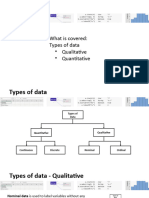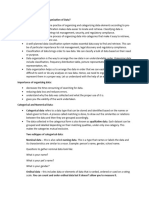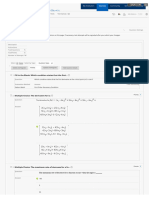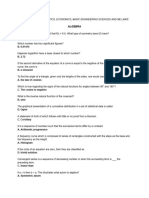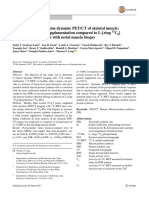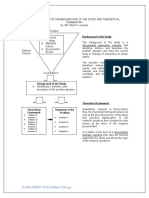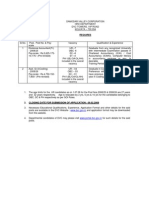TRAINING IN DATA ANALYSIS (SPSS/ EXCEL):
TYPES OF DATA:
When dealing with datasets, the category of data plays an important role to
determine which preprocessing strategy would work for a particular set to get
the right results or which type of statistical analysis should be applied for the
best results.
Let‟s dive into some of the commonly used categories of data: Quantitative data;
Qualitative data; Nominal data; Ordinal data; Discrete data; Continuous data.
Quantitative data:
This data type tries to quantify things and it does by considering numerical
values that make it countable in nature. The price of a smartphone, discount
offered, number of ratings on a product, the frequency of processor of a
smartphone, or ram of that particular phone, all these things fall under the
category of Quantitative data types.
� Quantitative data can be expressed as a number or can be quantified. Simply
put, it can be measured by numerical variables.
Quantitative data are easily amenable to statistical manipulation and can be
represented by a wide variety of statistical types of graphs and charts such
as line, bar graph, scatter plot, and etc.
Examples:
Scores on tests and exams e.g. 85, 67, 90 and etc.
The weight of a person or a subject.
Your shoe size.
The temperature in a room.
There are 2 general types of quantitative data: discrete data and continuous data.
Qualitative data:
�Qualitative or Categorical Data describes the object under consideration using a
finite set of discrete classes. It means that this type of data can‟t be counted or
measured easily using numbers and therefore divided into categories.
Qualitative data can‟t be expressed as a number and can‟t be measured.
Qualitative data consist of words, pictures, and symbols, not numbers.
Qualitative data is also called categorical data because the information can
be sorted by category, not by number.
Examples:
Colors e.g. the color of the sea.
Holiday destination such as S.A Hawaii, Dubai, etc.
Names as John, Patricia, Amanda…..
Ethnicity such as African, American, Indian, Asian, etc.
There are 2 general types of qualitative data: nominal data and ordinal data.
� Nominal data:
These are the set of values that don‟t possess a natural ordering.
Nominal data is used just for labeling variables, without any type of
quantitative value. The name „nominal‟ comes from the Latin word
“nomen” which means „name‟.
The nominal data just name a thing without applying it to order.
Actually, the nominal data could just be called “labels.”
Examples:
Gender (Women, Men).
Hair color (Blonde, Brown, Brunette, Red, etc.).
Marital status (Married, Single, Widowed).
Ethnicity (Hispanic, Asian).
As you see from the examples there is no intrinsic ordering to the
variables.
Eye color is a nominal variable having a few categories (Blue,
� Green, Brown) and there is no way to order these categories from highest to
lowest.
Ordinal data:
These types of values have a natural ordering while maintaining their class of
values.
Ordinal data is data which is placed into some kind of order by their
position on a scale. Ordinal data may indicate superiority.
Ordinal variables are considered as “in between” qualitative and
quantitative variables.
In other words, the ordinal data is qualitative data for which the values
are ordered.
In comparison with nominal data, the second one is qualitative data for
which the values cannot be placed in an ordered.
Examples:
The first, second and third person in a competition.
Letter grades: A, B, C, and etc.
� When a company asks a customer to rate the sales experience on a scale
of 1-10.
Economic status: low, medium and high
Discrete data:
The numerical values which fall under are integers or whole numbers are
placed under this category.
Discrete data is a count that involves only integers. The discrete values
cannot be subdivided into parts.
For example, the number of children in a class is discrete data. You can
count whole individuals. You can‟t count 1.5 kids.
To put in other words, discrete data can take only certain values. The
data variables cannot be divided into smaller parts.
It has a limited number of possible values e.g. day.
Examples of discrete data:
The number of students in a class.
The number of workers in a company.
The number of home runs in a baseball game.
� The number of test questions you answered correctly.
Continuous data:
The fractional numbers are considered as continuous values. These can take
the form of the operating frequency of the processors, the android version of
the phone, wifi frequency, temperature of the cores, and so on.
Continuous data is information that could be meaningfully divided into
finer levels. It can be measured on a scale or continuum and can have
almost any numeric value.
You can record continuous data at so many different measurements –
width, temperature, time, and etc. This is where the key difference from
discrete types of data lies.
Examples:
The amount of time required to complete a project.
The height of children.
The square footage of a two-bedroom house.
The speed of cars.
� THANK YOU!
SELF ASSESSMENT:
1. Name Two (2) types of Data?
2. What is Qualitative Data?
3. What is Quantitative Data?
















